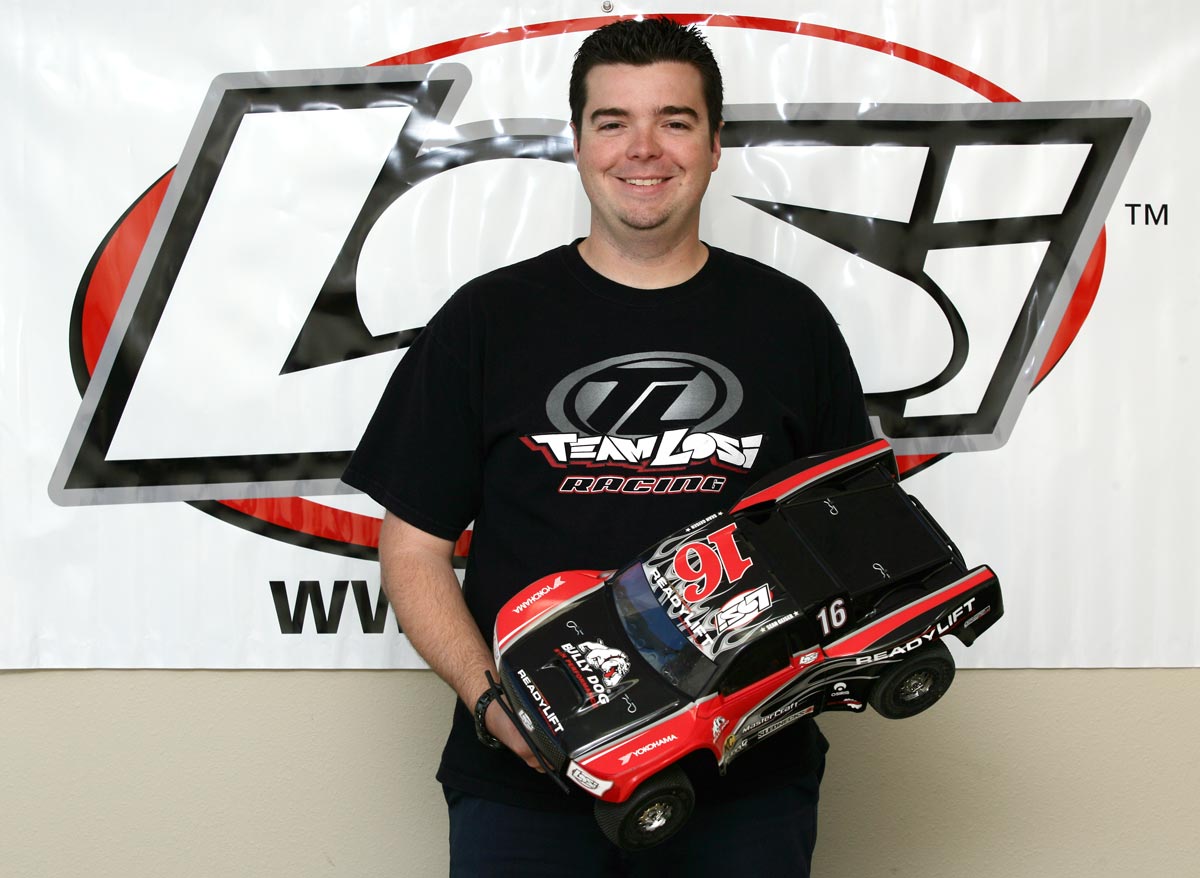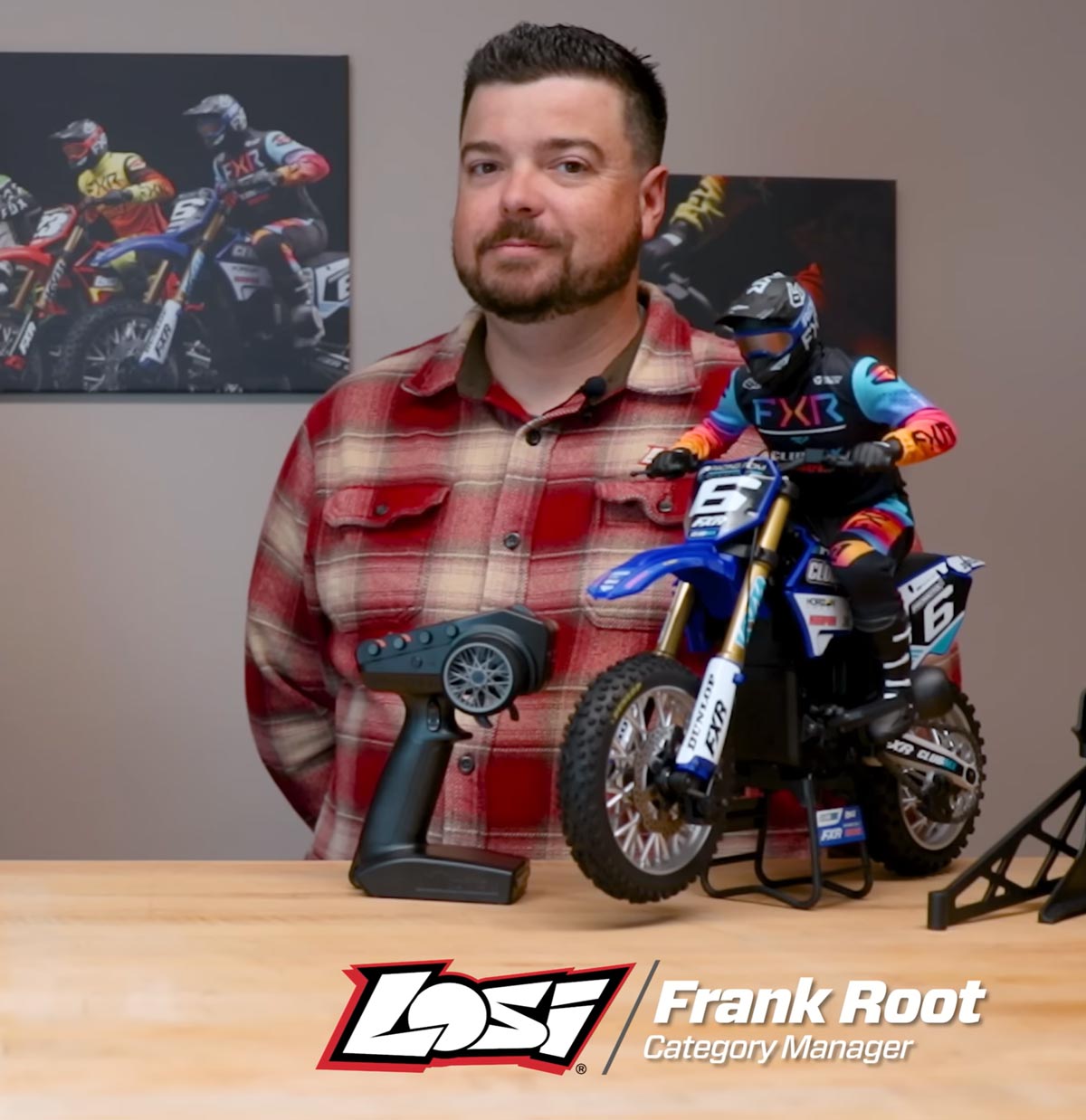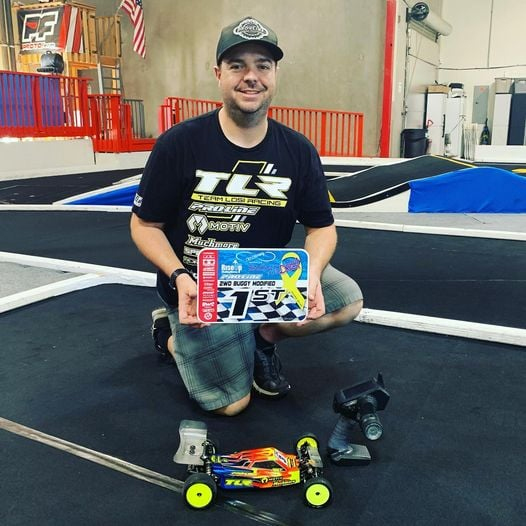How To Do What You Love And Still Love What You Do
Frank Root turned his love for racing into a career in radio control.
by Sean McDevitt

There’s a famous saying about jobs and work that probably everyone has read at one time or another.
I would not often take it upon myself to go against a renowned philosopher such as Confucius, but he’s dead wrong. You may love what you do, but it’s always still work. A case in point is the career trajectory of Frank Root.
Root grew up in a radio control family. His father, also named Frank, was a hobbyist and loved racing. Some of his earliest memories included running around near the RC racetrack just outside of Ascot Raceway in Southern California.
Root said, “My grandfather was a foreman for Pacific Bell in Southern California in their garage for all the trucks for the telephone company. He grew up in Illinois driving John Deere tractors off the lot, so he’s like a tractor guy. My Dad grew up around that and got the same kind of itch. He had motorcycles. He built his own dune buggy before he was 18. He had a Jeep that he went off-roading with for a few years. He built a 2006 Roush Mustang as a track car and was track champion in this racing series in Arizona. So, my Dad’s always been like a gearhead.”
At nine, the family moved to Phoenix, Arizona, and for that year’s Christmas, he received his first radio control car and fell in love with the hobby. He’d come home from school and run his car on his homemade backyard track until dinner, going through as many battery packs as possible.
Fast forward to 2004, and Root has moved back to Southern California after getting increasingly serious with racing.
“I had a regular job, but I was trying to race more and get better and racing at SoCal with the guys,” said Root. “I basically got to the point where I was making A-Mains at the Hot Rod Shootout, Cactus Classic, and Nationals. Also, by that point, you’re traveling a lot, and I was pretty dedicated to it multiple days a week.”
He started racing professionally for Team Losi Racing in 2010, but he knew he wanted a full-time career in the hobby doing more than just racing. After an impromptu interview and then a more formal one, he landed his dream job with Horizon Hobby.
“When I started at Horizon Hobby, I was working on the Xcelorin program, which is like electronics for 10th scale racing and RTRs, and we came out with a few cool products. One of them was the first “shorty” battery in the market,” said Root.
After a few years, he moved to work on the Team Losi Racing 10th scale race program bringing to life the 2.0 buggy truck, short course 3.0, and continued through the 22 5.0. In 2022, he became the category manager for performance for the Surface team working with product developers to push the category’s performance to the next level.
However, several years earlier, in 2017, a project was started that would take up much of his time and rethink his relationship with radio control.
In 2017, John Adams, the technical director for Spectrum, had a dream of creating a radio control motorcycle. Ones had existed in the past, but they were never very good for various reasons. The mechanical side of things was mostly there, but the balance and electronics were never up to standards. The concept Adams came up with was to use the proprietary Spektrum technology for air, Sensor Assisted Flight Envelope (SAFE), that incorporates multi-axis sensors and software to help airplanes and helicopters maintain level flight and stabilization to a motorcycle.

The team created a prototype design and began making a market-ready motorcycle.
Root said, “That’s when I was brought in. I was given the prototype design and told to acquire all these parts, put it together and start testing. And I’m like, ‘Uh, excuse me. I’ve never ridden a motorcycle. Am I the right guy for this?”
Root quickly got up to speed (no pun intended) and beginning in June 2019, Root, Adams, Gil Losi Jr., Todd Hodge, and others worked on every aspect of the motorcycle concept. Four years later, the Promoto-MX hit the streets.
Usually, when the product development team finishes a prototype, and the testing process is complete, they understand the geometry needed and the electronics. The next step is designing parts and creating molds. Parts get sampled, and the product moves into production. There are still a few tests for durability and other areas of modification, but the vehicle is essentially done. Even after the prototype, there were many things to learn about the motorcycle. They had a chassis, but the electronics didn’t exist. It was one of many problems that needed solving.
“It’s really easy to make prototypes but finding a way to manufacture something and have it be able to be assembled and not just machined for $1,500 was a challenge,” said Root.
The team spent months doing revisions on molded parts and spent a lot of time and money on retooling. Parts weren’t durable enough, or things had to change because of other considerations. Every day there were new questions to answer.
Root said, “We have this electronic system. Here’s the base, but where does the flywheel go? Not where can it go? Where should it go? Is it better forward? Is it better lower? Is it back a little bit? I think we had six different locations that we tested. What kind of steering linkage do we have? Can we have a soft linkage? Can we have a hard linkage? Should it be sprung? Should it be dampened with fuel tubing?”
There were so many questions ranging from how you mount a rider figure to how you pop a wheelie. It was a constant evolution of discovering the motorcycle geometry and how the electronics needed to work. The challenge wasn’t making it look like a motorcycle; it was making it work and look like a motorcycle.
Root and the team did testing at Pro-Line’s facility racetrack. The controlled environment helped with consistency, and having a private track kept development under wraps.
“They would put in a track for an event, and we’d go test the week after the event,” said Root. “We’d run on the track with the jumps and the pipes, and we knew this would be the coolest thing to race. It’s going to be so much fun.”
With the launch of the Losi Promoto-MX in June, Root is thinking of getting back into racing.
“Racing got put on the back burner the last two and a half years. I haven’t attended as many events, but I still have a passion for it. I got an eighth-scale buggy earlier this year and have been doing club racing.”
Nearly every day, someone asks him what it takes to become a full-time radio control race driver.
“The way I’ve described it is you need to be proficient at RC racing,” said Root. “And that sounds kind of broad, but that’s because it is. You don’t have to be the fastest. We are not expecting everybody on the team to win a national or even win at their local track. But if you have a proficiency in how to set a car up or how to guide younger people into a position where they can be successful… great. The whole goal is we, meaning TLR, help you. You help us. You help the brand, and we help you get to more races and succeed more in racing.”
After all this time, Root still has a passion for radio control. It’s work, but it’s also fun.
“I love RC cars, RC racing,” said Root. “I definitely enjoy the hobby. There are days when we get to test new products at the track, and those are great days, but I also do spreadsheets and emails. Yes, I go to meetings. I’m not sitting there like, ‘Sweet, this spreadsheet is so fun,’ but that spreadsheet is related to something that I have passion for, and that allows me to work the ninth hour that day or to go that extra mile. It’s way better than making something like water bottles all day, right?”
Right. This is way more fun.
